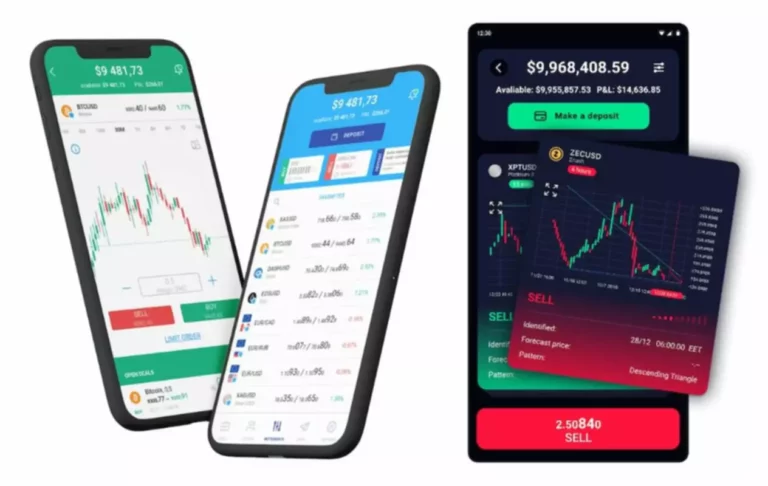Content
However, there are alternatives to forex trading which offer compelling benefits, including profit potential. Here, we list the best forex alternatives alongside their advantages and disadvantages. But, non-major currency pairs experience lower liquidity, which means the difference Cryptocurrency between intraday highs and lows tends to be wider. We see this when looking at the percentage range between different major, cross and exotic pairs.
- While the potential for substantial profits exists, the risks are equally significant.
- Most forex broker platforms offer these indicators and more, making it easier for traders to try out different indicators and determine the best one for their strategy.
- You can learn how to delta hedge long options positions to make extra money with limited downside risk if implied volatility seems cheap.
- An example of volatility in the market includes the 2008 financial crisis, when the mortgage bubble burst, triggering massive volatility in financial markets globally.
- Yes, market volatility can be predicted through various tools and models, including economic indicators, historical data, market sentiment, and technical analysis.
- Volatility is managed by risk management in various ways, including diversification, position sizing, setting stop-loss orders, hedging, and sticking to a predefined trading plan.
How is forex volatility measured?
Diversification complements hedging strategies where the trader opens positions in other assets to offset potential price risks in an existing position. Breakout forex traders use increases in volatility as breakout confirmations to avoid false breakouts. The increased volume in a forex volatility volatile market assures the trader that there is enough momentum to facilitate trend continuation.
The role of volatility in currency pair selection and trading strategies
High volatility prompts forex traders to reduce their position sizes to minimize potential losses, while low volatility encourages traders to increase their positions to capture https://www.xcritical.com/ more profits. Preparedness also involves maintaining a disciplined trading approach and adhering to well-defined risk management strategies. Volatile market conditions can tempt traders to make impulsive decisions, leading to unfavorable outcomes. To mitigate risk, traders should set clear profit targets and stop-loss levels, ensuring that potential losses are limited and profits are secured. To prepare for such events, traders should regularly refer to economic calendars, which provide schedules of upcoming news releases and events.

Market alternatives to forex volatility

Commodities markets are hugely diverse and include everything from livestock to platinum, but all commodities’ prices are governed by the laws of supply and demand. Some traders find it easier to understand the price fluctuations of commodities since these are often the result of tangible influences such as weather or seasonal cycles. At the same time, traders who have an insight into the production of certain commodities, such as the mining of copper, may have a natural advantage in trading it. As well as speculating on short-term price movements, traders can put their money in companies that they believe have the potential for long-term growth while also earning dividend payments. Liquidity, or easily buying and selling currencies, is critical in forex market volatility. Limited liquidity can exacerbate price fluctuations, making the market more prone to substantial price differences and erratic behavior.
When price spikes up and down rapidly, market participants generate above-average profits quickly if they follow a disciplined trading approach. Brexit, for instance, had a profound impact on various currency pairs, particularly involving the British Pound (GBP). The uncertainty surrounding the negotiations and the potential implications of the UK’s departure from the European Union led to sharp and unpredictable price movements.
An option is considered mispriced if the actual asset volatility differs from its implied volatility. Implied volatility (IV) measures the future volatility of an asset derived from the current price of an option contract for the underlying asset. Implied volatility shows the projected price fluctuations of an asset over the life of the option contract, usually a few weeks to months. Moreover, trading platforms and mobile applications provide real-time access to market data and analytical tools. By leveraging these resources, traders can react promptly to changes in volatility and capitalize on opportunities as they arise.
Any references to historical price movements or levels is informational based on our analysis and we do not represent or warranty that any such movements or levels are likely to reoccur in the future. When it comes to trading, one of the first things traders need to consider is the level of volatility in the market they choose to trade. Volatility plays a crucial role in determining the potential profits and risks involved in a trade. In this article, we will compare the volatility of the stock market with that of the forex market, analyzing the factors that contribute to their respective levels of volatility. Traders consider volatility when setting stop-loss and take-profit levels to accommodate potential spikes in volatile markets and avoid premature triggering.
Comprehensive trading forecasts provided by experts in the field offer valuable insights into potential market trends and price projections. These forecasts can guide traders in formulating their strategies and making well-informed decisions. By aligning their trading plans with expert analyses, traders can increase their confidence and adaptability in dynamic forex trading environments. In periods of volatility, the market can move by large amounts, which could see your gains magnified. This is why you should always manage your leveraged trades with take-profit orders and stop-losses, these allow you to set predetermined exit levels that will execute automatically at a certain level of profit or loss.
In the fast-paced world of forex trading, staying updated and prepared is paramount to achieving success in volatile market conditions. Understanding the typical volatility of different currency pairs is crucial for traders. It helps them assess risk, set appropriate stop-loss levels, and choose suitable trading strategies.
But, if you’re interested in the trading opportunities from the fast-paced changes, then the appropriate trading strategy and risk management plan can help you harness the market changes. While the potential for substantial profits exists, the risks are equally significant. As a result, traders need a well-thought-out strategy, sound risk management, and a clear understanding of market conditions. High realized volatility suggests that an asset experienced large price fluctuations in the past, while low realized volatility reflects small price movements in the past. In the dynamic world of Forex trading, major currency pairs like EUR/USD, USD/CHF, and EUR/GBP are considered the bastions of stability and liquidity.
Grasping the complex nature of forex volatility is crucial for those aiming to excel in this competitive environment. Leverage can be a tool to potentially grow your profits, but it also increases your risk. In volatile markets, high leverage can lead to significant losses if the market moves against you.
These calendars highlight key economic indicators, central bank meetings, and other significant announcements that could potentially affect the forex market. By keeping track of these events, traders can anticipate periods of increased volatility and adjust their trading strategies accordingly. Moreover, monitoring changes in currency correlations is vital, as correlations can shift over time due to changing market conditions, economic events, or geopolitical factors.
The difference between volatility and liquidity lies in the aspects of the market they measure. Economic indicators and news releases such as employment data and inflation reports or geopolitical developments like elections and wars are key volatility indicators. Traders anticipate rising market volatility during news releases and scheduled announcements and use statistical models to estimate the potential impact of the volatility on market prices. The EUR/CHF pair plummeted from around 1.20 to below 0.85 in a few minutes, causing significant losses for traders. Diversification allows traders to spread their risk across different assets, reducing their exposure to any single risk factor.
Keeping up with the latest news and developments that may impact the currencies you are trading is crucial. In early 2022, major central banks worldwide, such as the Federal Reserve and the European Central Bank (ECB) used for our example here, confronted global high inflation rates not seen in more than 40 years. The Federal Open Market Committee (FOMC) raised rates 11 times in 17 months and the ECB by 10 times in 16 months to bring inflation down. The central banks also had to maintain a balance, as raising rates can impact economic growth and the job markets. The uncertainty behind the central bank’s anticipated decisions kept the markets on edge every time there was a central bank interest rate decision on the economic calendar, and there were many of them throughout the year. The chart above highlights a few significant news events where volatility rose above average.
In addition to external sources, traders can also utilize technical tools and indicators to monitor market conditions and make data-driven decisions. Price charts, moving averages, and Bollinger Bands are some of the commonly used technical tools that can aid in recognizing trends and potential entry and exit points. Understanding currency correlation is essential in gauging the potential volatility of currency pairs. Correlation refers to the relationship between two currencies and how they tend to move in relation to each other. Positive correlation means that two currencies move in the same direction, while negative correlation implies they move in opposite directions.
